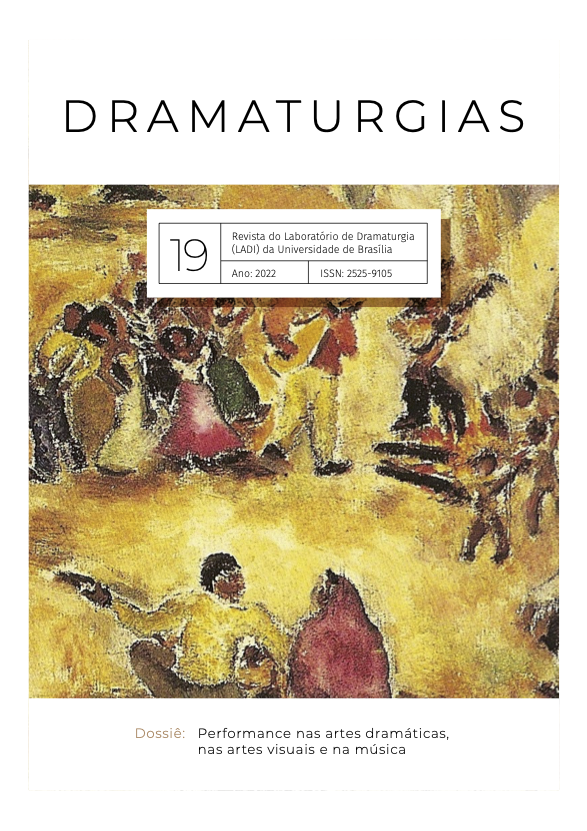Dialogue between Phidias and William Kentridge in the intertemporal cultural landscape of the Acropolis of Athens: Interactivity and audience performance in ancient and contemporary art
DOI:
https://doi.org/10.26512/dramaturgias19.44694Keywords:
Parthenon, Greek art, Greek architecture, Cinema, Contemporary artAbstract
The paper reflects on the dialogues that are established in the cultural landscape of the Acropolis between the frieze of the Parthenon carved by Phidias in the century. V a.C. and the expanded cinema artwork More Sweetly Play the Dance by William Kentridge, shown in 2017 in Athens. We show how the performance of the visitor’s walk around the Parthenon and on the sidewalk around the Acropolis where Kentridge’s work was exhibited makes its interactivity promote temporal and spatial intersections, between Antiquity, the medieval period, and contemporaneity.
Downloads
References
EISENSTEIN, Sergei. Towards a theory of montage (Sergei Eisenstein Selected
Works, volume II). Translated by Michael Glenny. Edited by Michael Glenny and
Richard Taylor. London/New York: I. B. Tauris, 1991.
EISENSTEIN, Serguei; BOIS, Yve-Alain; GLENNY, Michael. “Montage and Architecture”.
In: Assemblage 10 (Dez., 1989): 110-131.
LAGE, Celina F.; EV, Guilherme. “As transformações da Acropóle de Atenas, a monumentalidade
emblemática do Partenon e das suas esculturas”. In: Nearco
XII (2019): 49-68. Link: https://www.e-publicacoes.uerj.br/index.php/nearco/article/
view/49484
MICHALOPOULOU, Katerina; TOULOUMIS, Antonis. “Structural correlations between
architecture, music, and cinema: Rhythmical description of the Parthenon
frieze”. Proceedings of the 10th International Space Syntax Symposium (2015):
:1-16.
Downloads
Published
How to Cite
Issue
Section
License
Copyright (c) 2022 Autores mantém os direitos autorais e concedem à revista o direito de primeira publicação

This work is licensed under a Creative Commons Attribution-ShareAlike 4.0 International License.
Autores mantém os direitos autorais e concedem à revista o direito de primeira publicação, com o trabalho simultaneamente licenciado sob a Licença Creative Commons Attribution que permite o compartilhamento do trabalho com reconhecimento da autoria e publicação inicial nesta revista.



